- 6 Minutes to read
- Print
- DarkLight
- PDF
General Financial Configuration
- 6 Minutes to read
- Print
- DarkLight
- PDF
Access and complete each task under General Financial Configuration. This configuration is required.
Define Financial Segments
Define the name and number of financial business segments (also referred to as dimensions) for your Planful application. Segments are also referred to as dimensions and make up your Chart of Accounts. You must define at least two segments, but no more than eight apart from the system-defined segments (i.e. Time, Measure, Scenario). Out of the eight user-defined segments, one segment must represent a legal entity and the other segment must represent a natural account.
- When IFRS is enabled, the Reuse ICSegment as Additional Segment checkbox is disabled when you try to add a segment in Configuration Tasks > Define Financial Segments.
The Segment Name may contain alpha-numeric characters. The following Types help determine the features and use of the segment:
- Legal Entity– This is usually assigned to a company segment. The legal entity type represents the segment for currency translation consolidations.
- Account – This is usually assigned to a natural or main account segment within the general ledger.
- Additional Segment – This is used to define additional segments as needed.
- Interco (Intercompany Segment) – This is used to define an intercompany segment for entities involved in intercompany transactions.
Perform the below steps to define financial segments:
- Navigate to Maintenance > Administration > Configuration Tasks.
- Select Define Financial Segments under General Financial Configuration.

There are two existing system-defined segments in the Define Financial Segments page. The user will not be able to delete these two segments. However, they can edit the segment name.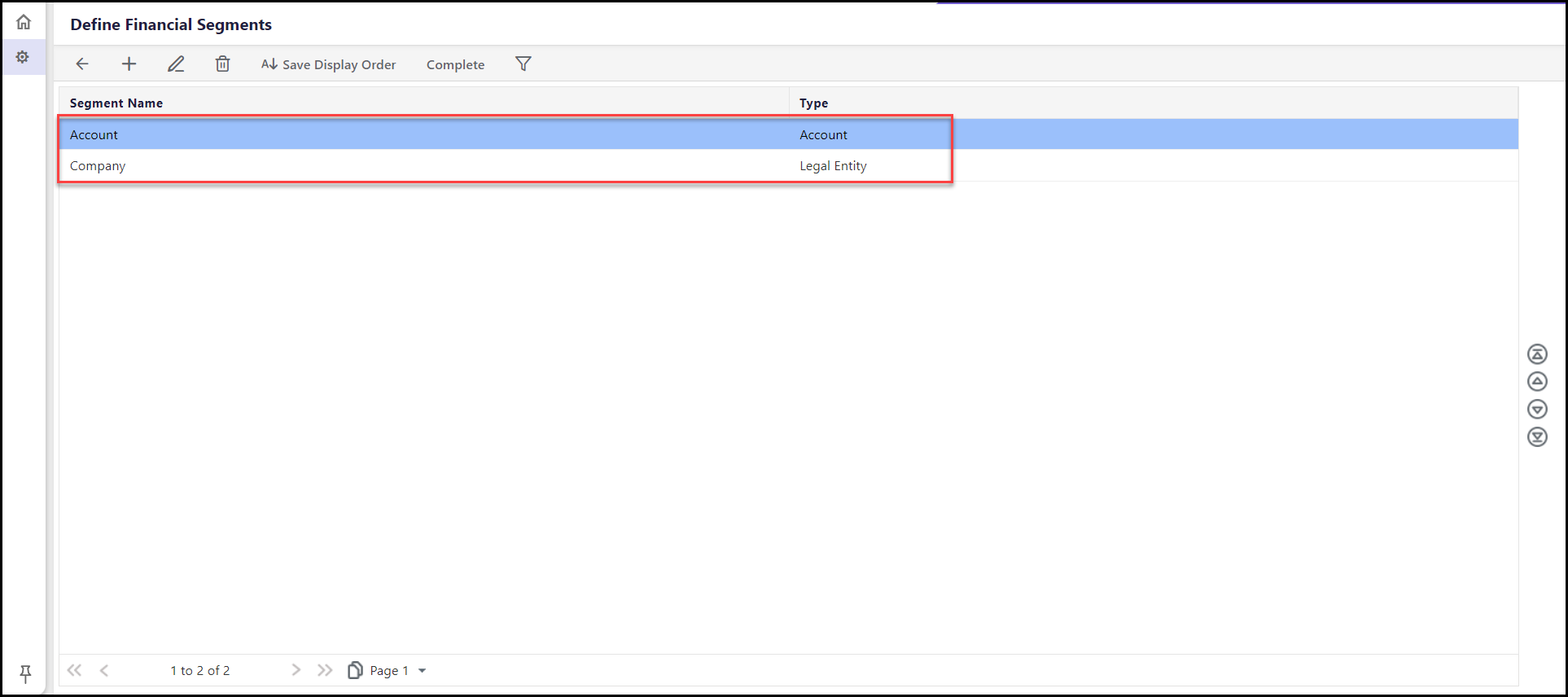 Note:Perform the below steps to edit a segment:
Note:Perform the below steps to edit a segment:- Select a segment and click Edit.

- The user can edit the Segment Name and modify Enable Dated Hierarchy (Yes/No) from the dropdown.
To learn more about Dated Hierarchy, click here. - Click Save.
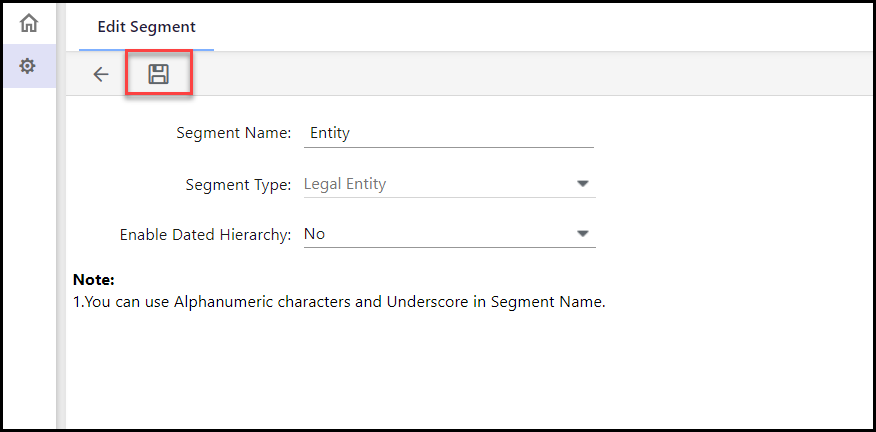
- Select a segment and click Edit.
- Click Add to add a segment.
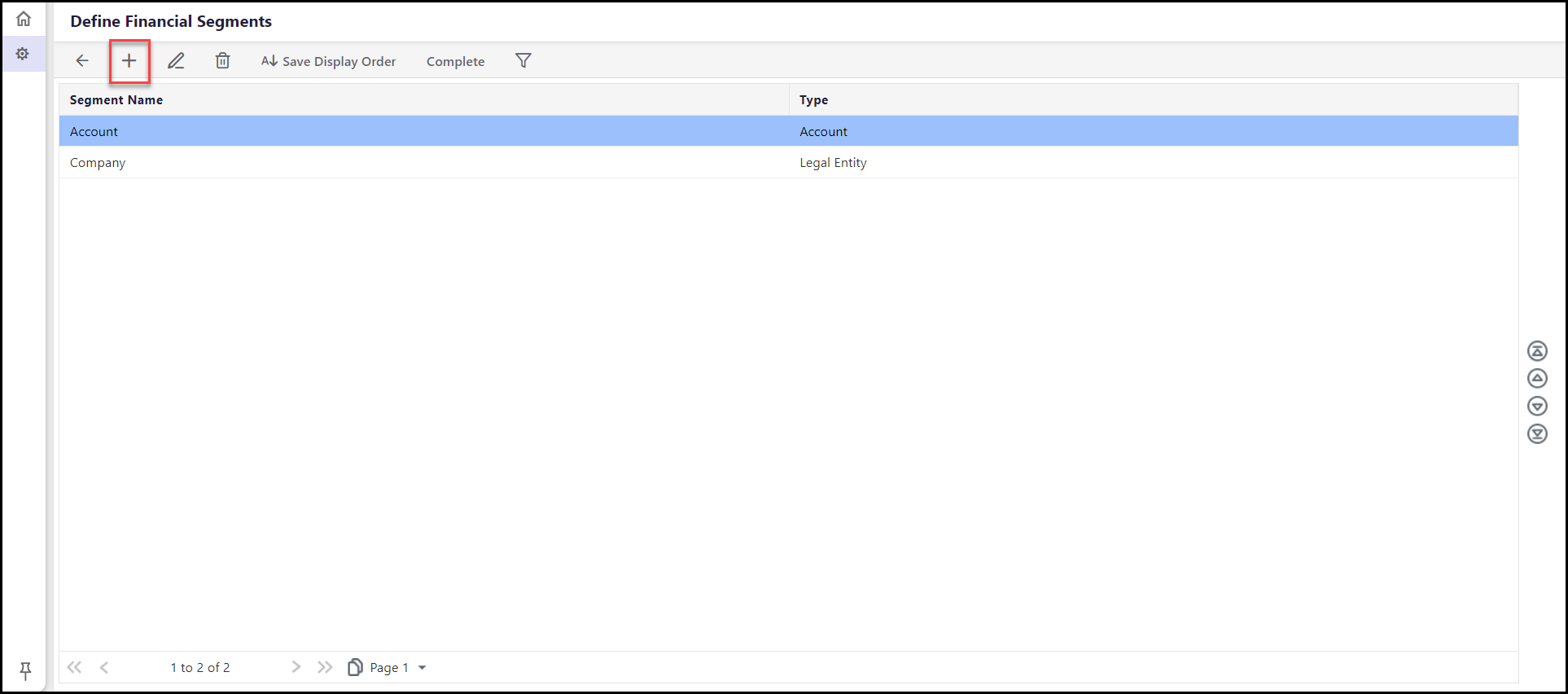
- Enter the Segment Name, and select Segment Type (IC Segment/ Additional Segment) from the dropdown.
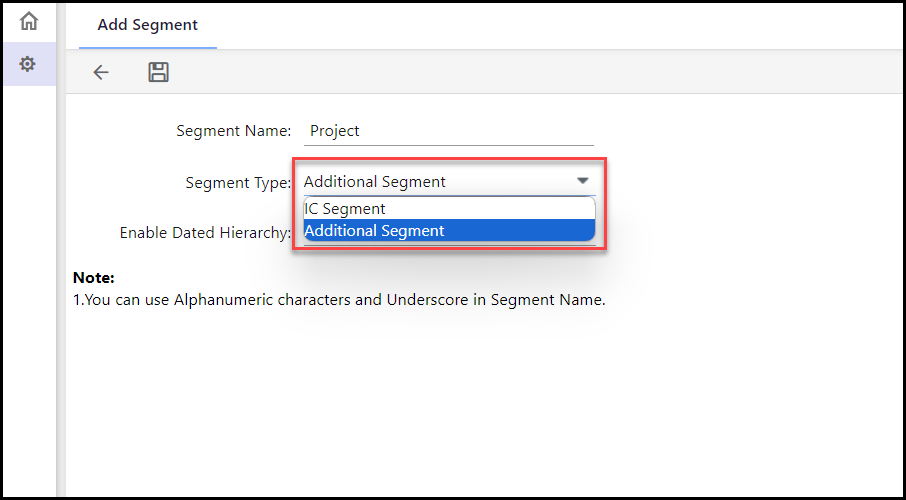
- Select a value for Enable Dated Hierarchy from the dropdown.
- The user can select Segment Type as IC Segment if they want to perform eliminations in consolidation.

- Users can check the Reuse IC Segment as Additional Segment option to utilize the IC segment as an additional segment after configuring the maximum of 7 additional segments.
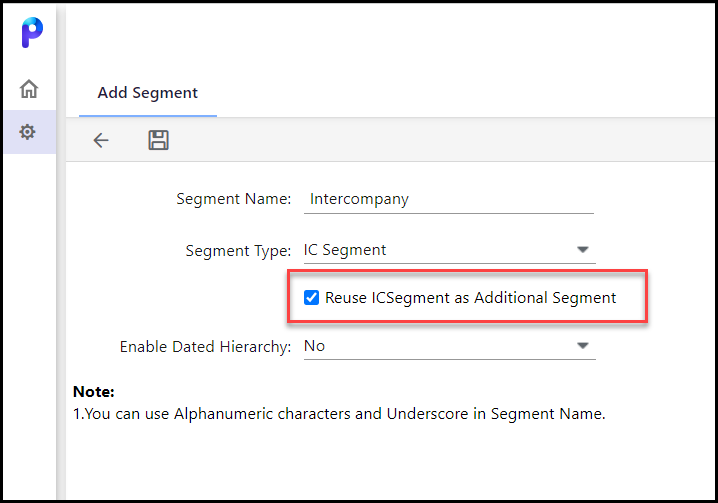
After selecting the checkbox, users cannot use the International Financial Reporting Standards (IFRS) hierarchy.Note:Only one IC Segment can be created. If there is an IC Segment already created, then all new segment’s Segment Type will be set to Additional Segment.
- Click Save.
- Use Apply Filter/Clear Filter to filter out financial segments based on Segment Name and Type.
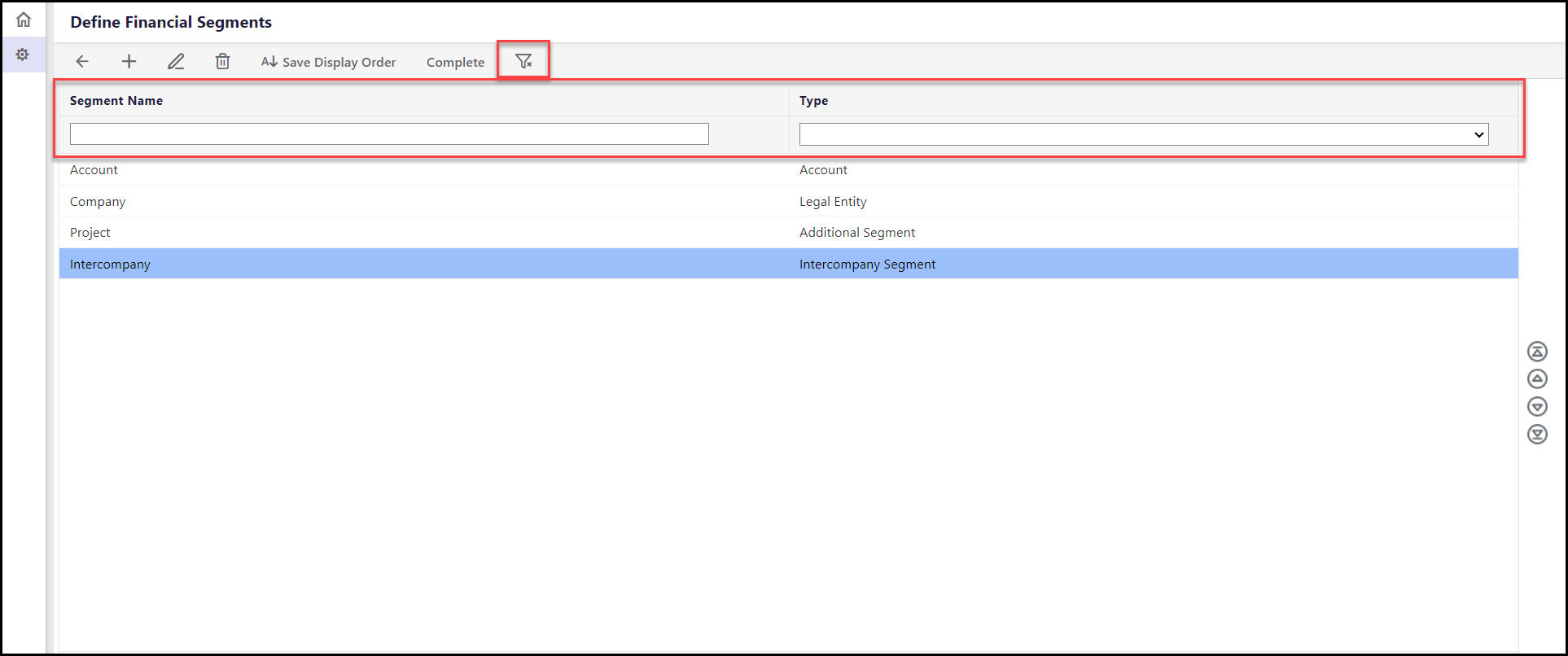
- Click Save Display Order to save the display settings on the Define Financial Segments page.
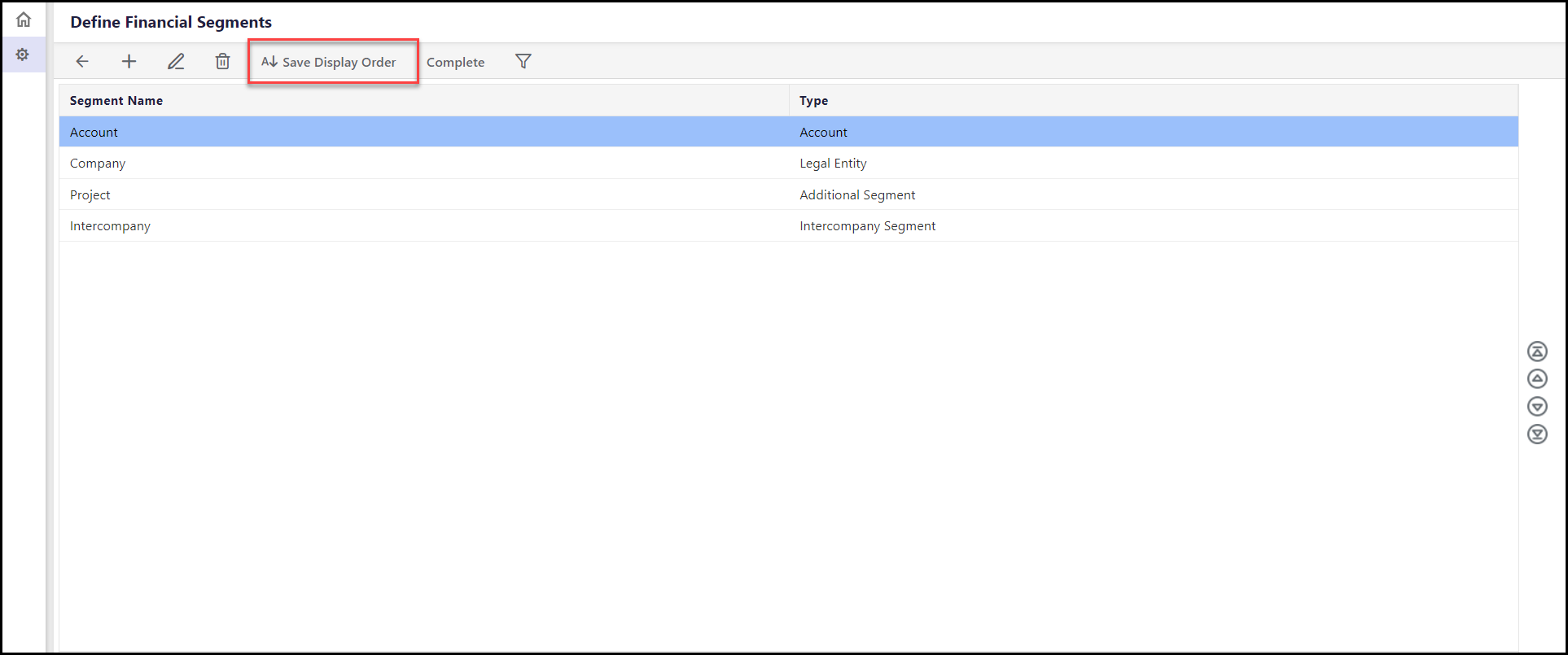
- Click Complete to complete the configuration setup.
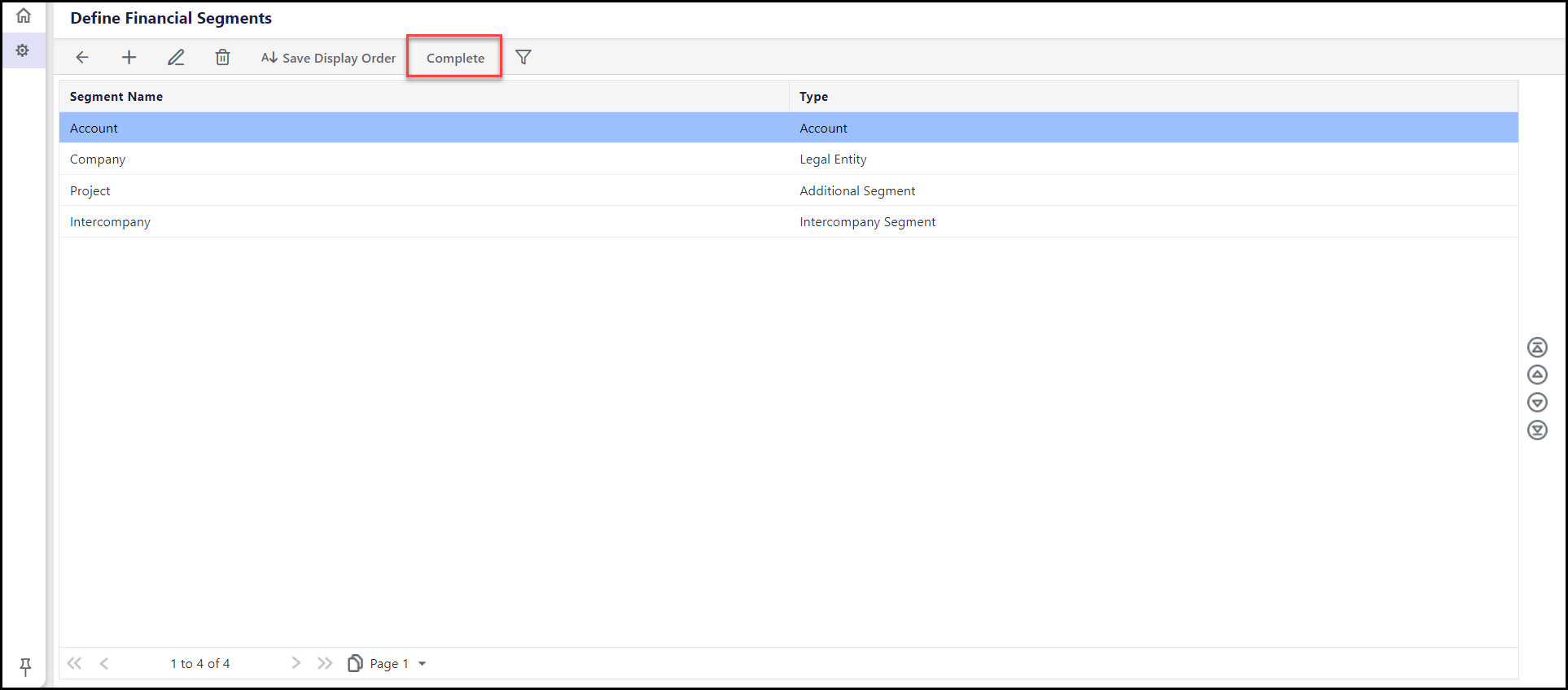
Users cannot add, edit, or delete a segment once the setup is complete.
Define Financial Budget Entity
The pane on the left is populated with the financial segments you defined. You don't have to use all financial dimensions for a financial budget entity. Select the segments you want to make up the Budget Entity definition and click the forward arrow so that those segments appear in the right pane. Your budget hierarchy entity selections will be populated based on the segments selected here.
Define Fiscal YearSetup
Establish the start and end of your organization’s fiscal year, including the number of periods associated with the fiscal year. Define roll-up levels and quarter members. Roll-up levels allow for additional time frequencies in a calendar. The lowest level is month. You will not be able to edit the names of the levels unless the periods per fiscal year is great than 12.
Specify fiscal years based on your company's operations. Fiscal years may be associated with calendar years or any other type of year. You can also define quarters, months, and fiscal year start and end dates.
Extend Calendar - Extend your calendar. For example, you may have a 1 year calendar that you want to extend to include an additional year.
Fiscal Year Details
Fiscal Year Start Month - Select the month your company starts its fiscal year. Fiscal years may correlate with calendar years or any other type of year defined by your company.
Fiscal Year End Month - The month your company ends its fiscal year. This is automatically selected based on the month selected to start the fiscal year.
Name Fiscal Year by - Allows you to configure a Financial Year and name it according to your organizational needs. For example, if you have a fiscal year that starts in February and ends in January, you can use this functionality to name the fiscal year in accordance with the calendar year of the first month instead the last month. So Fiscal Year 2017 would contain periods February 2017 to January 2018.
Calendar Start Year - The selected start year will be displayed across all the Time dimension fields.
Calendar End Year - This field is the only field that is editable once a calendar is created . Use this field to extend your calendar by selecting a future year.
Periods Per Fiscal Year - Select the number of periods that correlate to your fiscal year. For example, you may select 12 periods, which correlate to 12 months in your fiscal year.
Define Rollup Level
These levels define additional time frequencies within the calendar. The lowest level is Month.
Note:
The names of the levels can be edited only when the Periods Per Fiscal Year is more than 12.
Quarter Members
Associate quarters to your fiscal year. For example, you may choose to have a fiscal year made up of 4 quarters. Each quarter will have 3 months. Or, you may choose to have a fiscal year with 3 quarters. If this is the case each quarter will have 4 months.
Number of Members at Quarter Level
Select the number of quarters that make up your fiscal year. For example, if your fiscal year is made up of 4 quarters, enter 4. Now, each quarter will be made up of 3 months.
Note:
This field can be edited only when the Periods Per Fiscal Year is more than 12.
Member Name - Provide a name for each quarter. For example, you might want to name the first quarter Q1, the second quarter Q2, and so on.
Note:
This field can be edited only when the Periods Per Fiscal Year is more than 12.
Month - Enter the number of months associated with each quarter. For example, if you entered 2 in the Number of Members at Quarter Level field, then you will have two quarters consisting of 6 months per quarter.
Define Budget Parameters
Define the number of years budgeted at one time and the number of compare scenarios accessible while entering a budget. Compare scenarios allow you to compare historical actuals, data from a prior period in the budget cycle, etc. This is used for the Planning module.
Define Currency Parameters
Define common currency, conversion basis, and interim currency parameters. There are 3 currencies associated with a legal entity: Common Currency, Local Currency, and Interim Currency. Common Currency (CC) is your functional currency. The Local Currency (LC) is the currency for each member in the company hierarchy. The Interim Currency may consist of up to 3 currencies. Data (Budget, Actuals) may be loaded in the CC or LC. When you load data in the LC, any exchange rates defined are applied. The data is then stored in tables in the CC and LC. Interim Currencies are typically used in reporting and dashboards as alternative currencies. You can view Report data in the CC, LC, or Interim Currency. For Interim Currency, you can enable one, two, or three. You cannot enable more than three interim currencies. Interim currency converts a legal entity from its local currency to a second reporting currency before converting to the common currency. For example; A UK entity converts from BP sterling to Euro to US dollars.
- Common Currency Code - Enter a currency code (i.e. USD for United States Dollars).
- Common Currency Name - Enter a currency name (i.e. US Dollars as the currency name for the USD currency code).
- Currency Conversion Basis - Select a basis to convert a currency. For example, select Multiply to multiply exchange rates. Select Divide to divide rates during currency conversion.
- Enable Interim Currency - This option allows you to enable one, two, or three interim currencies. You can not enable more than three interim currencies. Interim currency converts a legal entity from its local currency to a second reporting currency before converting to the common currency. For example; A UK entity converts from BP sterling to Euro to US dollars.

